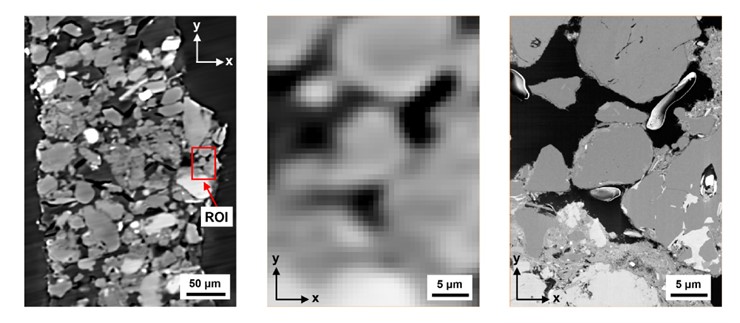Thermo Fisher Scientific › Electron Microscopy › Electron Microscopes › 3D Visualization, Analysis and EM Software › Use Case Gallery
3D loess microstructure of loess, including skeleton particles as well as inter-particle bonding structures, was characterized through a correlative approach using μXCT and FIB-SEM

Loess, a Quaternary wind-blown deposit, is a problem soil that gives rise to frequent geohazards such as landslides and water-induced subsidence. The behavior of loess is controlled by its microstructure, consisting of silt sized skeleton particles and complex bonding structures formed by clay-sized particles. Achieving a deep understanding and precise modelling of loess behavior necessitates comprehensive knowledge of the realistic 3D microstructure. In this paper, a correlative investigation of the 3D loess microstructure is performed using X-ray micro-computed tomography (μXCT) and focused ion beam scanning electron microscope (FIB-SEM). Details of clay structures in loess, such as clay coatings, clay bridges and clay buttresses, are visualized and characterized in 3D based on FIB-SEM images with a voxel size of 10 × 10 × 10 nm3. The clay structures exhibit a diverse degree of complexity and their impact on the mechanical properties of loess is highlighted. Statistical analysis of the skeleton particles, including size, shape and orientation, are derived from μXCT images with a voxel size of 0.7 ×0.7 × 0.7 μm3. The findings provide insights into the collapse mechanism and particle-scale modelling of loess. The combination of μXCT and FIB-SEM proves to be a powerful approach for characterizing the intricate microstructures of loess, as well as other geomaterials.
The micro- and nano-tomographic data were visualized and analyzed using the commercial software Thermo Fisher Avizo® which provides mainstream image processing modules and allows customized operation development.
For Research Use Only. Not for use in diagnostic procedures.